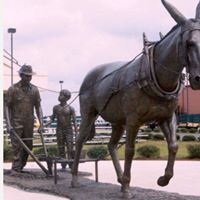What killed over half a million Americans in 1918?
The 1918 flu pandemic (January 1918 – December 1920) was an unusually deadly influenza pandemic, the first of the two pandemics involving H1N1 influenza virus. It infected 500 million people across the world, including remote Pacific islands and the Arctic, and resulted in the deaths of 50 to 100 million (three to five percent of the world's population), making it one of the deadliest natural disasters in human history. Disease had already greatly limited life expectancy in the early 20th century. A considerable spike occurred at the time of the pandemic, specifically the year 1918. Life expectancy in the United States alone dropped by about 12 years.
More recent investigations, mainly based on original medical reports from the period of the pandemic, found that the viral infection itself was not more aggressive than any previous influenza, but that the special circumstances (malnourishment, overcrowded medical camps and hospitals, poor hygiene) promoted bacterial superinfection that killed most of the victims typically after a somewhat prolonged death bed.
In the U.S., about 28% of the population became infected, and 500,000 to 675,000 died. Native American tribes were particularly hard hit. In the Four Corners area alone, 3,293 deaths were registered among Native Americans. Entire village communities perished in Alaska. In Canada 50,000 died. In Brazil 300,000 died, including president Rodrigues Alves. In Britain, as many as 250,000 died.
More Info:
en.m.wikipedia.org











